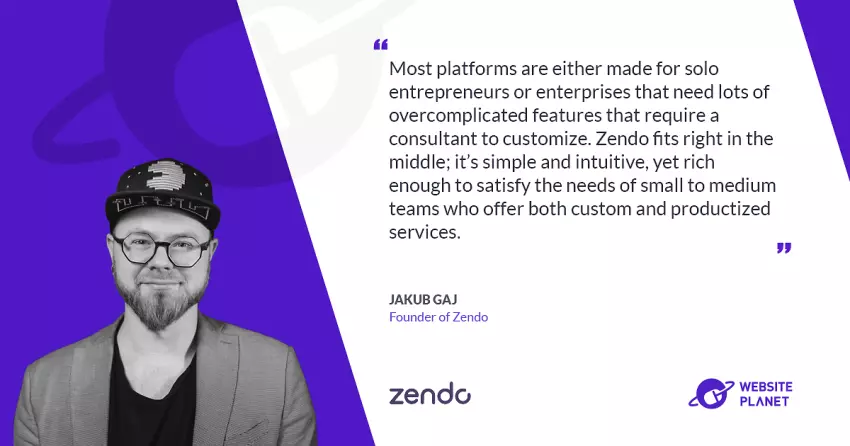This week, we had the opportunity to speak with Jakub Gaj, the Founder of
Zendo. We discussed their beginnings, how the company evolved, and what functionalities Zendo offer.
What is Zendo?
Zendo is a collaborative platform for small to medium teams that streamline selling custom and productized services. It supports transparent communication, organization, and having all your files at hand, from exchanged messages and images to clients’ feedback and billing information. Zendo also combines elements of a client portal by enabling access to the platform for clients to view their own projects, communicate with the team, and access the whole history of the business relationship.
Please describe the story behind the product: What sparked the idea, and how has it evolved so far?
Back in 2016, once we decided to start selling WordPress services at scale, we needed a proper platform to handle all the requests easily and efficiently without the need for hiring additional people to handle the customer service. None of the tools available on the market satisfied us, so we decided to develop our own. We named it WP Kraken.
After a while, we’ve noticed a rising interest of our clients in the platform itself. They liked the simplicity of it and the resulting ease of use. That’s where we saw the opportunity right in front of us — people were obviously looking for a tool we already had. The easiest deal ever.
But we couldn’t sell WP Kraken, because it was a fully custom solution that worked only for us. That’s why we decided to make a new one, entirely from scratch.
It was the right decision. Zendo turned out to be a more polished, improved, and better–looking version of WP Kraken, suitable for many different industries.
What functionalities does Zendo offer?
Zendo offers a real-time communication channel in the form of chat, where you can exchange messages and attachments, leave internal notes invisible to the client, as well as estimations and payments. It’s our killer feature that allows clients to pay for the services immediately with just one click.
Additionally, Zendo allows you to create an order form to be embedded into your own website where your clients can easily send a request. They can either order fully custom solutions that need evaluation or pick productized services if the vendor offers any.
No matter the type, all requests will land directly in Zendo where it lands into a specific pipeline. Your team members can take care of that request immediately. The client is not expected to sign up to Zendo — they can answer all the messages from their email for their convenience.
But when they do, they have full access to their business history, can go back to old messages, download any files they need, or simply check on the project status and its progress.
Who are your typical customers, and what do you think is the main challenge that your product solves for them?
A typical customer would be a small to medium service business owner with their own team who lacks structure. They want to bring order to their processes while preserving flexibility and improving the customer experience by ensuring fast replies, clear processes, and effortless payments. The last thing might seem trivial, but way too many businesses settle for messy inboxes that keep swallowing important emails, slowing down the team.
What separates Zendo from other similar platforms?
Most platforms are either made for solo entrepreneurs or enterprises that need lots of overcomplicated features that require a consultant to customize. Zendo fits right in the middle; it’s simple and intuitive, yet rich enough to satisfy the needs of small to medium teams who offer both custom and productized services. It’s an all–in–one solution which can reduce the number of tools used in general, while also reducing the amount of time by streamlining repetitive tasks. You can save money, too — because the price is very affordable.


